FORWARD FACING: Innovations that are Moving Building Enclosure Design, Fabrication, Installation and Performance in Bold New Directions
Insulated Metal Panels
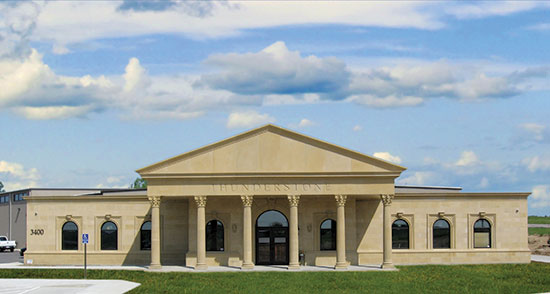
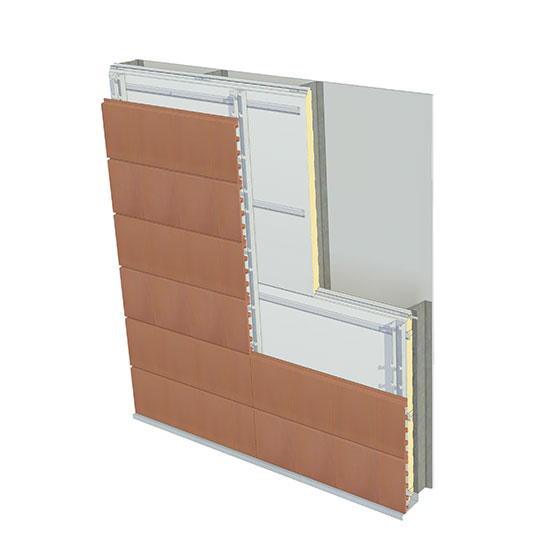
Images courtesy of Metl-Span
Insulated metal panels can provide continuous insulation behind a variety of cladding types including some metal skins that are fabricated to look like stone or terra cotta.
Insulated metal panels used in an exterior wall or facade can provide vast design opportunities while helping to meet sustainability performance goals. Indeed, they have been a common and popular choice by many architects in order to build more energy-efficient buildings while keeping within budget and material requirements. In practice, these systems are commonly provided by a single manufacturer to provide an insulated metal back-up panel that is also an air, water, thermal, and vapor barrier panel. Typically, this panel is installed in a horizontal orientation completely outside the structural supports. This way, there are no thermal bridges to reduce the energy efficiency of the wall. Then a final facade finish of choice can be installed as the exterior weathering skin. High-performance continuous insulation systems like this help commercial and industrial buildings meet energy codes and standards like ASHRAE 90.1. As a metal product, the commonly high level of recycled content makes it an environmentally friendly choice for architects, designers, builders, and contractors seeking a sustainable product.
It is common to think of insulated metal panels like this as only used with a metal skin, which is certainly a common option. However, they can also be used behind any type of facade cladding, including masonry or other materials. The benefit is that these manufactured wall panels have the potential to save time and money since they provide, in a single step, air, water, thermal, and vapor protection for a facade.
Craig Caudill, EVP of a construction company known as ProClad in Noblesville, Indiana notes, “Insulated metal panels are ideal for exterior wall systems. They provide not only easy installation and great cost savings over other types of systems, they also have great efficiency in controlling temperatures due to their continuous insulation. And the installation of the panels involves only a single trade.”
Three-Dimensional Aluminum Composite Panels
Another popular cladding choice for commercial buildings, particularly in retail and office applications, is the use of aluminum composite panels. These exterior skins are more rigid and self-supporting than metal siding due to their multi-layer makeup of an inner and outer metal face separated by a very thin layer of rigid foam or other material. This composite construction means that the appearance and shape can be controlled with less likelihood of warping or “oil canning.” A smoother appearance makes them particularly well-suited for modular panels over an insulated underlayment to act as the weathering and appearance surface of a building facade.
Recent innovations in the manufacture of aluminum composite panels has allowed for bold new looks to be realized. Rather than keeping the panels as flat surfaces, fully three-dimensional panels are now available that have either a convex or concave shape. The innovative 3D shape adds visual and textural interest to the facade of a building by creating a true and intentional depth to the panels. Further, the panels are available as part of an overall system that allows for installation either in new construction or on existing buildings.
As a complete system, care is taken not to produce any wasted material because of the size of the modular panels. There are a number of different sized modular panels available in both convex and concave configurations using the minimum waste approach. This engineered manufacturing process creates a systemized, unitized product that can be used as a kit of standard sized panels allowing designers to work with many different arrangements and layouts. Further, one of the benefits of aluminum is that color choices are numerous with new ones often available regularly. It also means that accent bands or distinct colored areas can be designed easily within the modular arrangement. The net effect is a structurally rigid 3D panel system that provides for a colorful, undulating visual effect especially under dynamic lighting conditions.
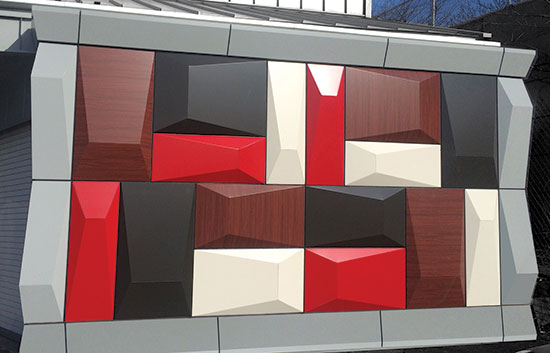
Photo courtesy of Acpexpress
Three-dimensional aluminum composite panels are available in a wide variety of sizes, colors, and patterns to create a truly dynamic concave or convex facade.
Notice

www.acpexpress.com

www.buildabetterbarrier.com

www.fibertite.com
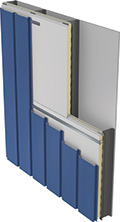
www.metlspan.com

www.parex.com
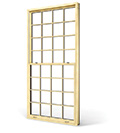
www.pellacommercial.com
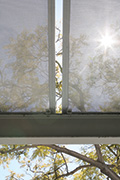
www.sergeferrari.com

www.tubeliteinc.com









